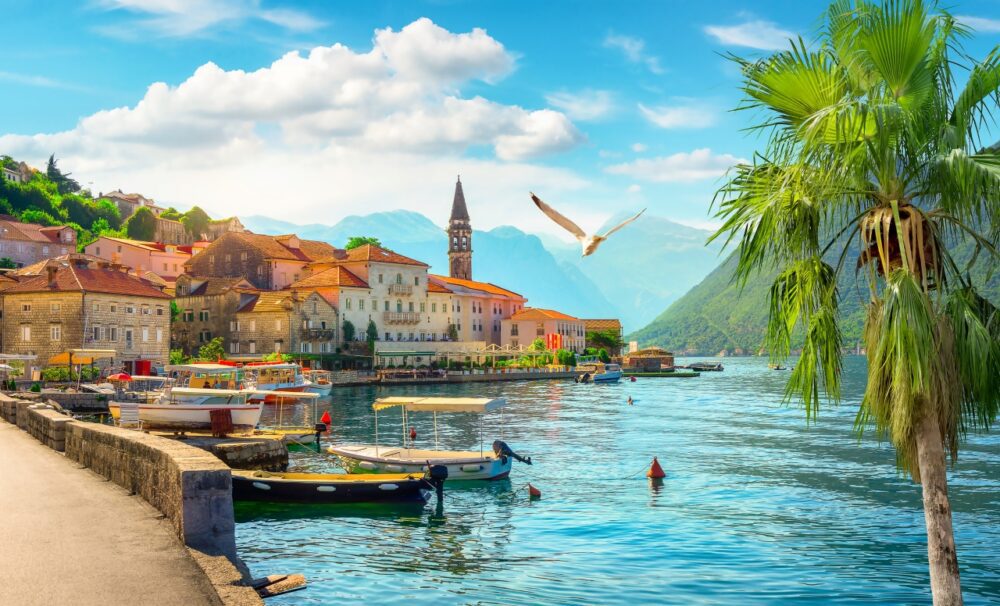
Introduction
Montenegro may be small, but it packs an incredible punch when it comes to natural beauty, history, and culture. Tucked between the Adriatic Sea and the rugged mountains of the Balkans, this country has something for every type of traveller. Whether you’re dreaming of sun-drenched beaches, medieval towns, or dramatic mountain landscapes, Montenegro delivers. When I first visited, I couldn’t quite believe how much diversity I found in such a compact area. One moment you’re strolling through the cobbled streets of a walled city, the next you’re hiking through pristine national parks or lounging by the coast.
It’s still relatively off the radar for many tourists, which means you can explore some of the most stunning spots in Europe without the crowds. Plus, Montenegro is incredibly affordable, so it’s easy on the wallet, even if you’re craving a Mediterranean getaway. In this guide, I’ll take you through why Montenegro should be at the top of your travel list and highlight the best places to visit.
Table of Contents
Reasons You Should Visit Montenegro
1. Breathtaking Coastal Towns
Montenegro’s Adriatic coast is an absolute stunner, with historic towns, crystal-clear waters, and beaches that feel like they’ve been pulled straight from a travel brochure. If you’re looking for that classic Mediterranean vibe—think terracotta roofs, cobblestone streets, and sparkling blue seas—Montenegro’s coastline has it all, without the tourist overload you might find in Croatia or Italy.
One of my favourite places is Perast, a tiny village just up the coast from Kotor. It’s impossibly charming, with its stone houses and churches framed against the Bay of Kotor’s deep blue waters. The highlight here is hopping on a boat to Our Lady of the Rocks, a man-made island with a fascinating legend and a church you can explore. You can spend hours wandering the sleepy streets or just sitting by the water with a cold beer, watching the boats drift by.
For a bit more buzz, Budva is the place to go. It’s got everything—great beaches, a lively nightlife, and a medieval old town that’s fun to explore. Plus, it’s a stone’s throw from Sveti Stefan, one of the most photographed spots in the country. I’d recommend visiting Budva in the shoulder seasons (spring or autumn), when you’ll get the best of both worlds: perfect weather and fewer tourists.
2. Incredible Mountain Scenery
As soon as you venture inland from the coast, Montenegro’s landscapes shift dramatically. Suddenly, you’re in a world of towering peaks, deep canyons, and sparkling lakes. The mountains here are seriously underrated—perfect for hiking, skiing, or just taking in the views.
Durmitor National Park is one of the most breathtaking places I’ve ever hiked. I tackled the Bobotov Kuk trail, the highest peak in Montenegro, and while the climb was tough, the panoramic views from the top were worth every step. If you’re not up for a full-day hike, you can always explore the Black Lake (Crno Jezero) at the base of the mountains. It’s a beautiful spot for a picnic or a leisurely walk around the lake.
In winter, Zabljak is the go-to for skiing and snowboarding. It’s not as polished as resorts in France or Austria, but that’s part of the charm. Plus, it’s a fraction of the cost, making it a great spot for budget-conscious skiers. Even if you visit in the warmer months, Zabljak makes a great base for exploring the rugged beauty of the Tara River Canyon, the second-deepest canyon in the world. I tried white-water rafting on the Tara, and the combination of adrenaline and scenery was unforgettable.
3. Rich History and Culture
Montenegro might be small, but its history is deep and complex. The country has been shaped by the influences of Romans, Byzantines, Venetians, Ottomans, and Austro-Hungarians, and you can see this rich heritage reflected in its architecture, art, and cuisine.
Kotor is the crown jewel when it comes to Montenegrin history. I spent hours getting lost in the maze of narrow streets in its UNESCO-listed old town. Every corner reveals something new—a tucked-away piazza, a centuries-old cathedral, or a café with perfect views of the towering mountains behind the town. If you’re feeling energetic, hike up to the Castle of San Giovanni for panoramic views of the bay. It’s a steep climb, but the view from the top is one of the best I’ve seen in Europe.
Cetinje, the old royal capital, is another place where history comes to life. It’s much quieter than the coastal towns, but that’s part of its charm. You can visit the Cetinje Monastery, which houses relics like the hand of Saint John the Baptist, or take a walk around the grand, slightly faded old embassies from the days when Cetinje was a diplomatic hub.
4. Delicious Food and Wine
Montenegrin cuisine is an underrated delight, with a perfect mix of Mediterranean and Balkan influences. Expect lots of grilled meats, fresh seafood, and hearty stews, all made with locally sourced ingredients. If you’re a seafood lover, you’re in luck. The coast is packed with restaurants serving up freshly caught fish and shellfish.
I had some of the best seafood of my life in a tiny restaurant in Herceg Novi, where the grilled octopus and squid were so tender they practically melted in my mouth. Inland, try local specialities like kacamak, a hearty dish made from potatoes and cheese, or njeguški pršut, a delicious cured ham from the village of Njeguši.
Montenegro also produces excellent wines, though they don’t get as much attention as they deserve. The country’s sunny climate is perfect for grape-growing, and you’ll find both reds and whites that are more than worth your time. I’d recommend visiting one of the family-run wineries in the Lake Skadar region, where you can enjoy tastings and tours. Vranac, a robust red, is a local favourite and pairs perfectly with a meaty dish like cevapi.
5. Small but Packed with Adventure
One of the best things about Montenegro is how compact it is. You can drive from the coast to the mountains in just a couple of hours, making it incredibly easy to pack a lot into a short trip. Whether you’re into hiking, kayaking, cycling, or simply soaking in the scenery, Montenegro has an adventure for you.
One day, I was exploring the ancient streets of Kotor, and the next I was kayaking across the tranquil waters of Lake Skadar, the largest lake in the Balkans. The lake is a haven for wildlife, especially birds, so don’t forget your binoculars if you’re into birdwatching. For the more adventurous, try canyoning in Nevidio Canyon or paragliding over the dramatic cliffs near Tivat—both experiences will get your heart racing and give you a whole new perspective on the landscape.
Best Places to Visit in Montenegro
1. Perast

If you’re looking for a picture-perfect coastal village, Perast is it. Tucked along the Bay of Kotor, Perast feels like a step back in time. The town is small, but its baroque palaces and churches, all built from the same pale stone, give it an air of quiet grandeur. There are no beaches here, but that’s part of its charm—you come to Perast to relax, take in the views, and enjoy the tranquillity.
A must-do in Perast is taking a short boat trip to Our Lady of the Rocks, a man-made island with a beautiful church. The story goes that local sailors built the island by dropping stones into the bay after every successful voyage. It’s a peaceful place to explore, with great views of the mountains and the bay.
2. Kotor
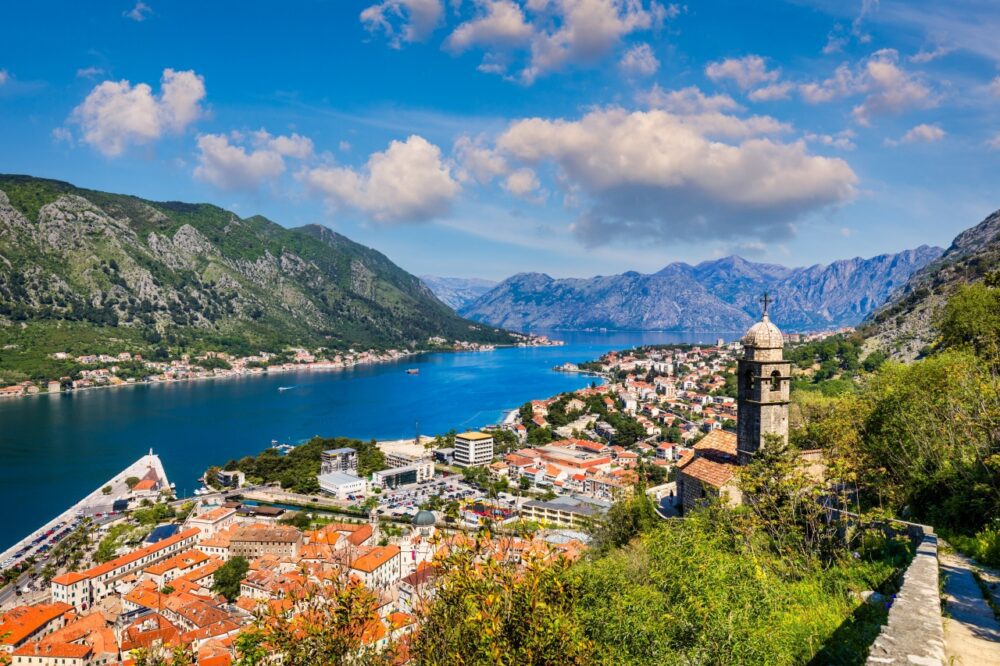
Kotor is one of those places that feels like a dream. Its medieval old town, nestled between the mountains and the bay, is a UNESCO World Heritage Site that’s as atmospheric as it gets. I loved getting lost in its winding alleys, discovering tiny squares, churches, and cafés tucked away from the busier streets.
The highlight of Kotor, though, is the hike up to the Castle of San Giovanni. It’s a steep climb—over 1,300 steps—but the panoramic views over the bay and old town are worth every drop of sweat. Start early in the morning or late in the afternoon to avoid the midday heat. And don’t forget to treat yourself to a well-deserved ice cream at the bottom afterwards.
3. Ulcinj
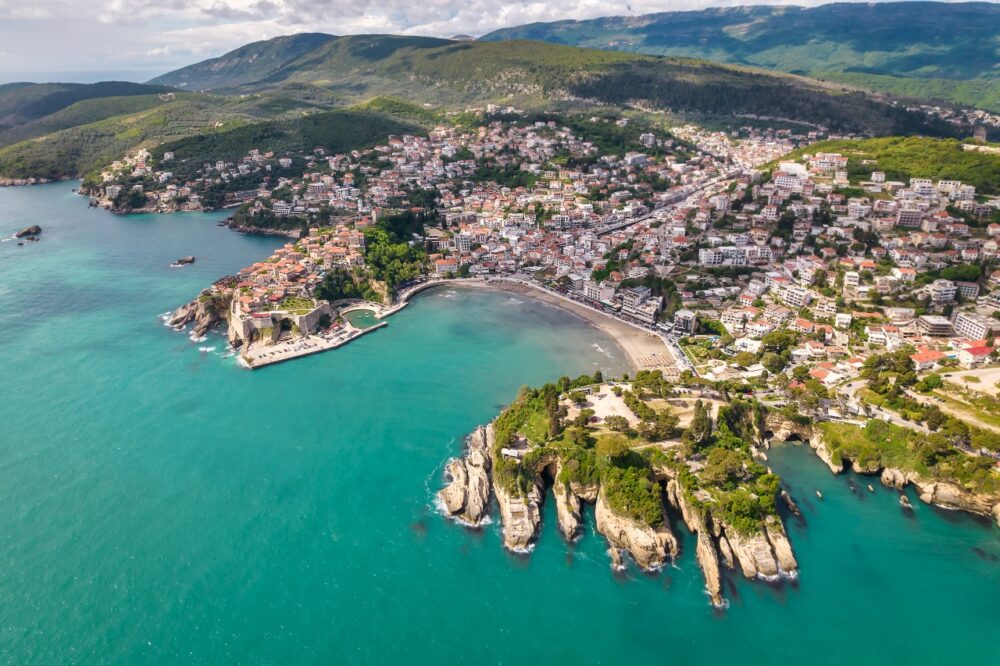
Ulcinj, on Montenegro’s southern coast, is a world away from the more polished towns to the north. This lively town is known for its mix of cultures—it was once a pirate haven and has a strong Ottoman influence, which gives it a unique vibe compared to the rest of the coast.
The highlight here is Velika Plaža, the longest beach in Montenegro, stretching for 12 kilometres along the Adriatic. It’s much less developed than other beaches, so there’s plenty of space to spread out and enjoy the sand and sea. Ulcinj is also close to Ada Bojana, a triangular island at the mouth of the Bojana River that’s popular with kitesurfers.
4. Cetinje
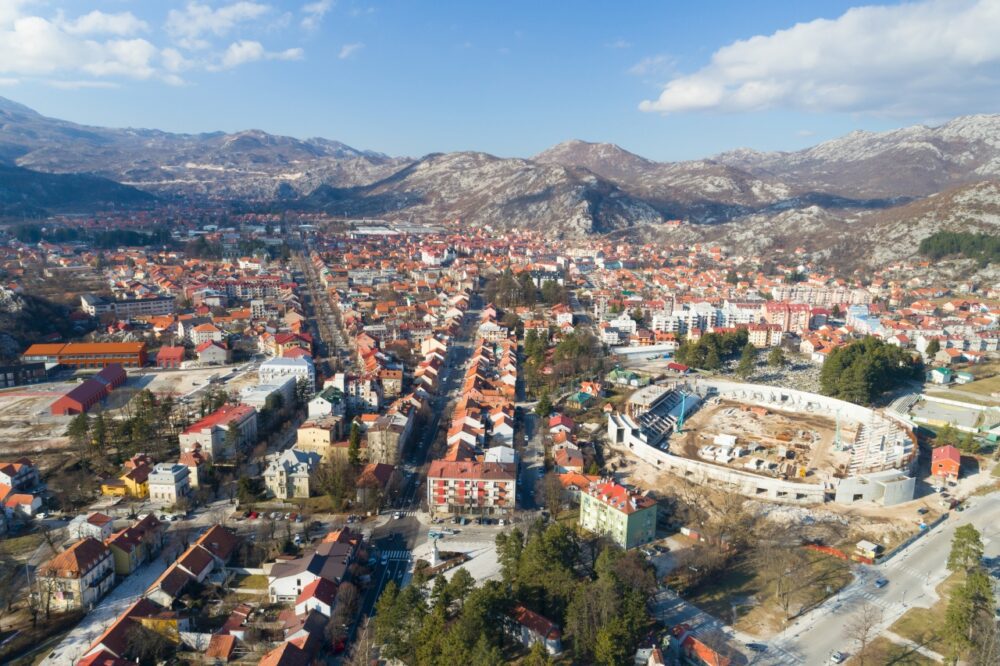
Tucked into the mountains just inland from the coast, Cetinje is the former royal capital of Montenegro and still feels like the cultural heart of the country. It’s a small, peaceful town, with grand old buildings that hint at its diplomatic past. Cetinje Monastery is the main attraction, home to important religious relics, including a fragment of the True Cross.
If you’re into history, you’ll love wandering around the old embassies and royal palaces. Biljarda, the former residence of Petar II Petrović-Njegoš, is particularly interesting for a glimpse into Montenegro’s royal past. And while you’re in the area, don’t miss a drive up to Lovćen National Park, where you’ll find Njegoš’s Mausoleum, perched high on a mountain with stunning views of the surrounding landscape.
5. Budva
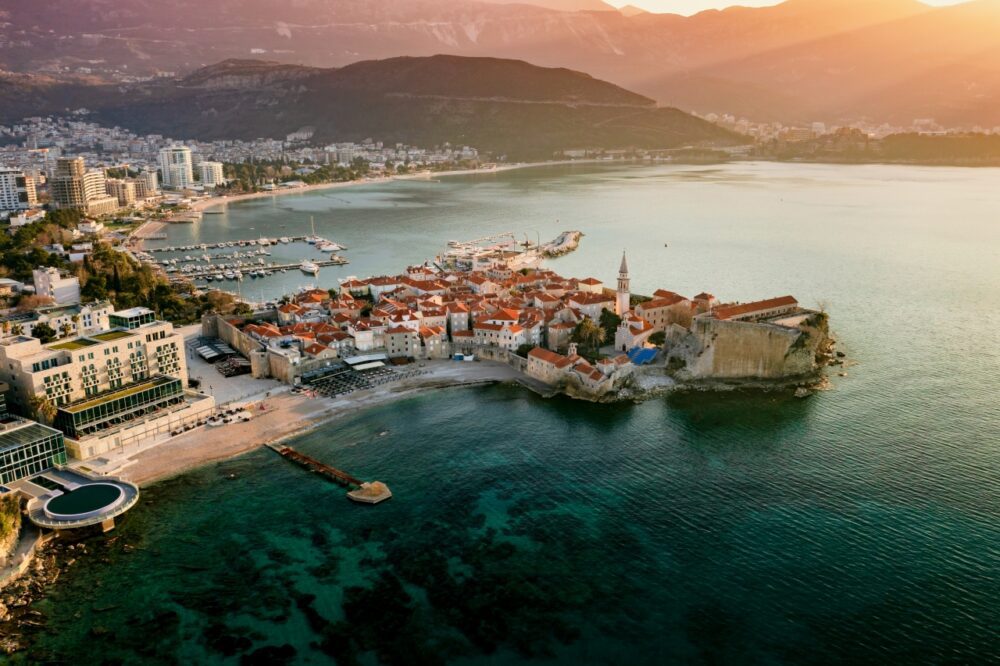
Budva is Montenegro’s party town, but there’s more to it than just nightlife. The old town, Stari Grad, is a walled maze of narrow streets, hidden squares, and seaside cafes. It’s touristy, but still a great place to wander and soak up the Mediterranean atmosphere. The town’s beaches, particularly Mogren Beach, are some of the best on the coast—perfect for a day of sunbathing and swimming.
Just outside Budva, you’ll find Sveti Stefan, a tiny islet turned luxury hotel that’s one of Montenegro’s most famous landmarks. Even if you can’t afford to stay there, you can admire it from the beach and take in the picture-perfect view.
6. Podgorica
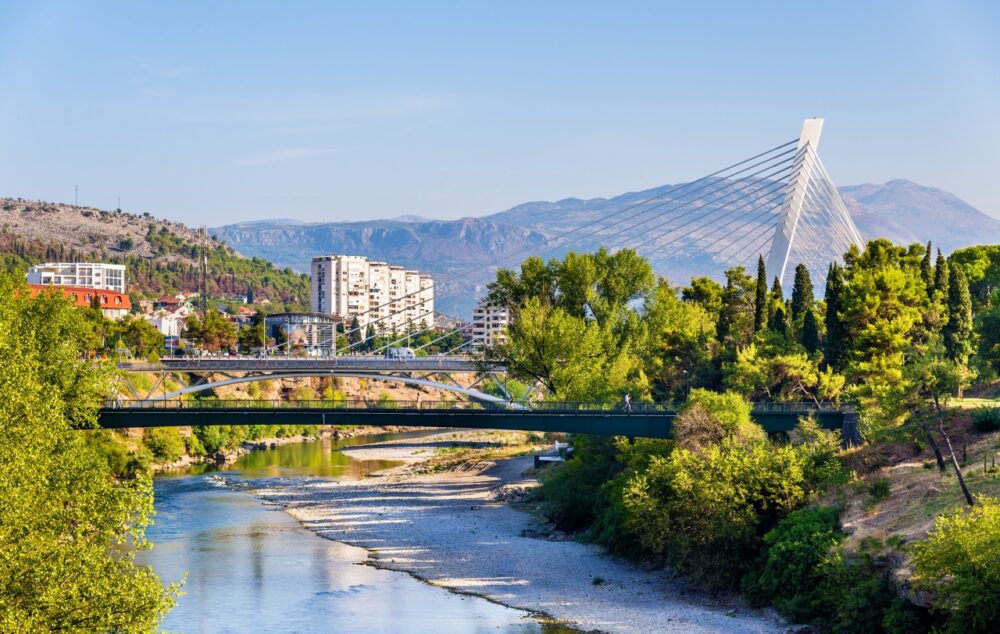
Podgorica, Montenegro’s capital, doesn’t have the charm of Kotor or Budva, but it’s worth a visit to get a sense of the country’s more modern side. The city is a mix of Brutalist architecture and leafy parks, and while it’s not as pretty as the coastal towns, there’s a certain appeal to its rawness.
I found Gorica Hill to be a peaceful spot, with great views of the city and surrounding mountains. The Millennium Bridge is another highlight, especially at night when it’s all lit up. Podgorica’s café culture is strong, so take your time and enjoy a coffee in one of the many open-air spots around the city centre.
7. Zabljak
If you’re heading to the mountains, Zabljak is your base. This small town sits in the heart of Durmitor National Park and is a hub for outdoor adventures. Whether it’s skiing in the winter or hiking in the summer, Zabljak is a paradise for nature lovers.
The nearby Tara River Canyon is a must-see—it’s the second deepest canyon in the world, after the Grand Canyon. I went white-water rafting here, and it was one of the highlights of my trip. If you’re not into rafting, the canyon also offers stunning hiking trails with some of the best views in Montenegro.
8. Herceg Novi
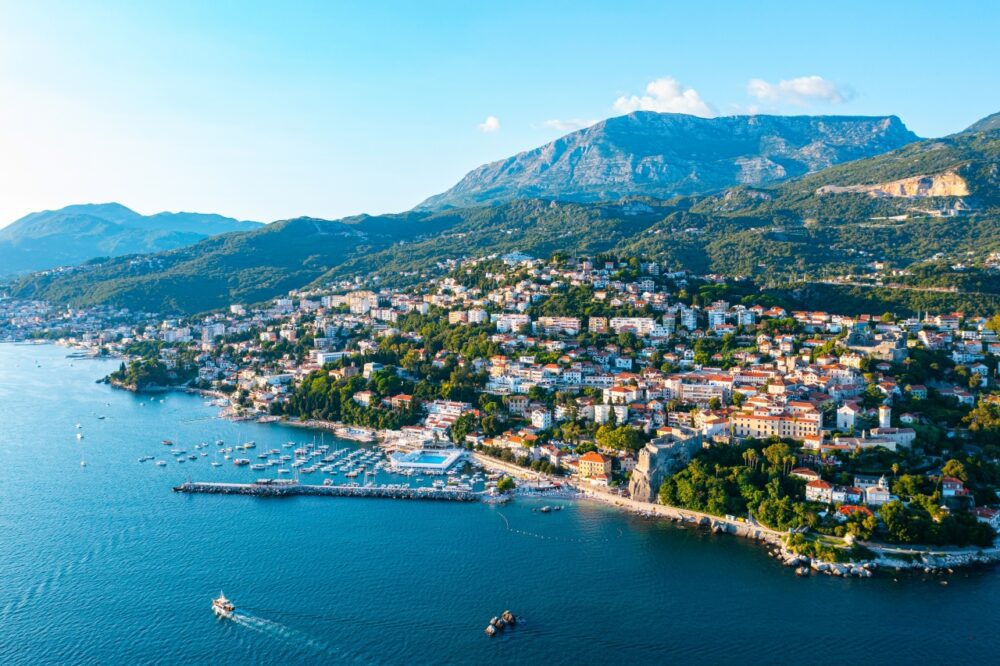
Herceg Novi sits at the entrance to the Bay of Kotor and has a laid-back charm that’s hard to resist. It’s known for its steep streets, lined with flowers and old stone buildings, and its many fortresses. Forte Mare and Kanli Kula offer great views over the bay and are fun to explore.
The town has a more relaxed vibe than Budva or Kotor, making it a great spot to unwind by the sea. There are plenty of rocky beaches where you can swim in the clear Adriatic waters, and the town’s many cafés and restaurants are perfect for a leisurely lunch.
9. Tivat
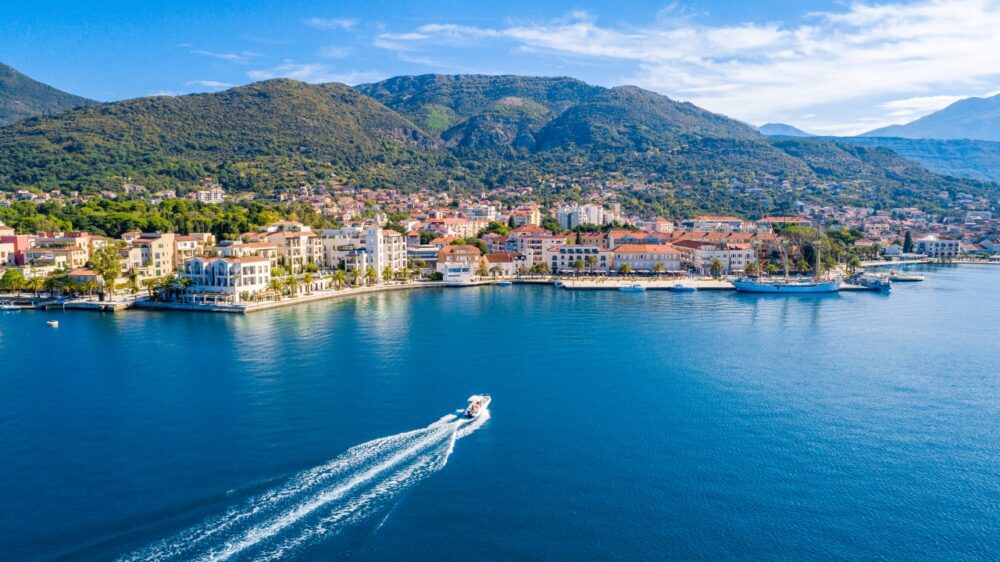
Tivat used to be little more than a quiet coastal town, but it’s transformed into a hotspot for luxury tourism, thanks to Porto Montenegro, a sleek marina filled with yachts and high-end restaurants. If you’re looking for a taste of the good life, this is the place to be.
Despite its glitzy new image, Tivat still retains some of its traditional charm, especially in the old town. Take a walk along the waterfront, or if you’re feeling more adventurous, rent a boat and explore the nearby Bay of Kotor. The Gornja Lastva village, perched on a hill above Tivat, offers a more peaceful, rustic experience with beautiful views of the bay.
10. Niksic
Niksic is a bit off the beaten path for most tourists, but if you’re interested in exploring Montenegro’s interior, it’s worth a visit. The town is known for its beer—Niksicko Pivo is Montenegro’s most famous brew, and you can visit the brewery to learn more about its history.
Niksic also makes a great base for exploring Ostrog Monastery, one of Montenegro’s most important religious sites. The monastery is built into a sheer cliff face, and the view as you approach it is absolutely breathtaking. Even if you’re not religious, it’s an impressive place to visit.
Travel Tips for Montenegro
Getting Around Montenegro
Montenegro is small, so getting around is relatively easy. Buses are the main form of public transport and connect most cities and towns, with regular routes between Podgorica, Kotor, and Budva. The coastal bus routes are especially scenic. Renting a car is ideal for exploring more remote areas like Durmitor National Park or the Bay of Kotor, but be aware that roads can be narrow and winding. Taxis are affordable, but always agree on a fare or ask the driver to use the meter.
Best Time to Visit Montenegro
The best time to visit Montenegro is during spring (April to June) and autumn (September to October), when the weather is mild, and the crowds are smaller. These seasons are perfect for hiking in the mountains or sightseeing in coastal towns. Summer (July to August) is the peak tourist season, with hot weather and busy beaches along the Adriatic coast. If you enjoy skiing, winter (December to February) is the best time to visit the mountain resorts in Durmitor and Kolašin.
Passport and Visa Requirements for Montenegro
Visitors from EU/EEA countries, US, UK, Canada, and Australia can enter Montenegro visa-free for up to 90 days. Your passport should be valid for at least three months beyond your stay. If you’re planning to visit nearby countries like Croatia or Serbia, check their visa requirements as well. Montenegro is not part of the Schengen Area, so you’ll need to go through border controls when entering and exiting.
Currency and Banks in Montenegro
Montenegro uses the Euro (EUR), even though it’s not officially in the Eurozone. ATMs are widely available in cities and tourist areas, and credit cards are accepted in most places, though smaller shops and restaurants in rural areas may prefer cash. It’s a good idea to carry some cash, especially when visiting more remote areas. Tipping in restaurants is appreciated, usually 5-10%, but not mandatory.
Language and Useful Phrases to Know
The official language is Montenegrin, which is very similar to Serbian. While English is widely spoken in tourist areas, especially along the coast, learning a few Montenegrin phrases can go a long way. Try “Zdravo” (hello), “Hvala” (thank you), and “Molim” (please). In more rural areas, you might encounter people who speak little English, so having basic phrases ready is helpful.
Budgeting and Costs for Montenegro
Montenegro is generally affordable, especially compared to Western Europe. Accommodation, food, and transport are reasonably priced, though coastal areas like Budva and Kotor can be more expensive in the summer. To save money, eat at local konobas (taverns), where you can enjoy traditional Montenegrin dishes at lower prices. Public buses are cheap, and staying in guesthouses or Airbnbs can help stretch your budget. Visiting outside the peak summer season will also help avoid higher prices.
Conclusion
Montenegro is a country that punches far above its weight. Whether it’s the stunning coastal towns, the towering mountains, or the rich culture and history, there’s something here for every kind of traveller. I’ve been lucky enough to explore much of what this beautiful country has to offer, and I’m constantly surprised by how much there is to see and do.
If you’re looking for a destination that combines natural beauty, fascinating history, and a bit of adventure—all without the hefty price tag of other Mediterranean countries—Montenegro is the place to go. Trust me, it won’t be long before you’re planning your next trip back.
